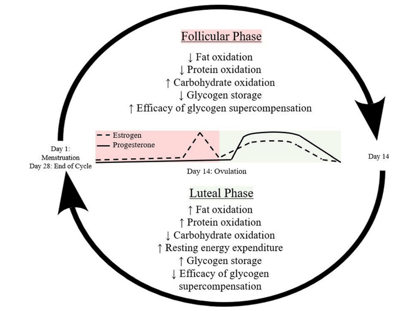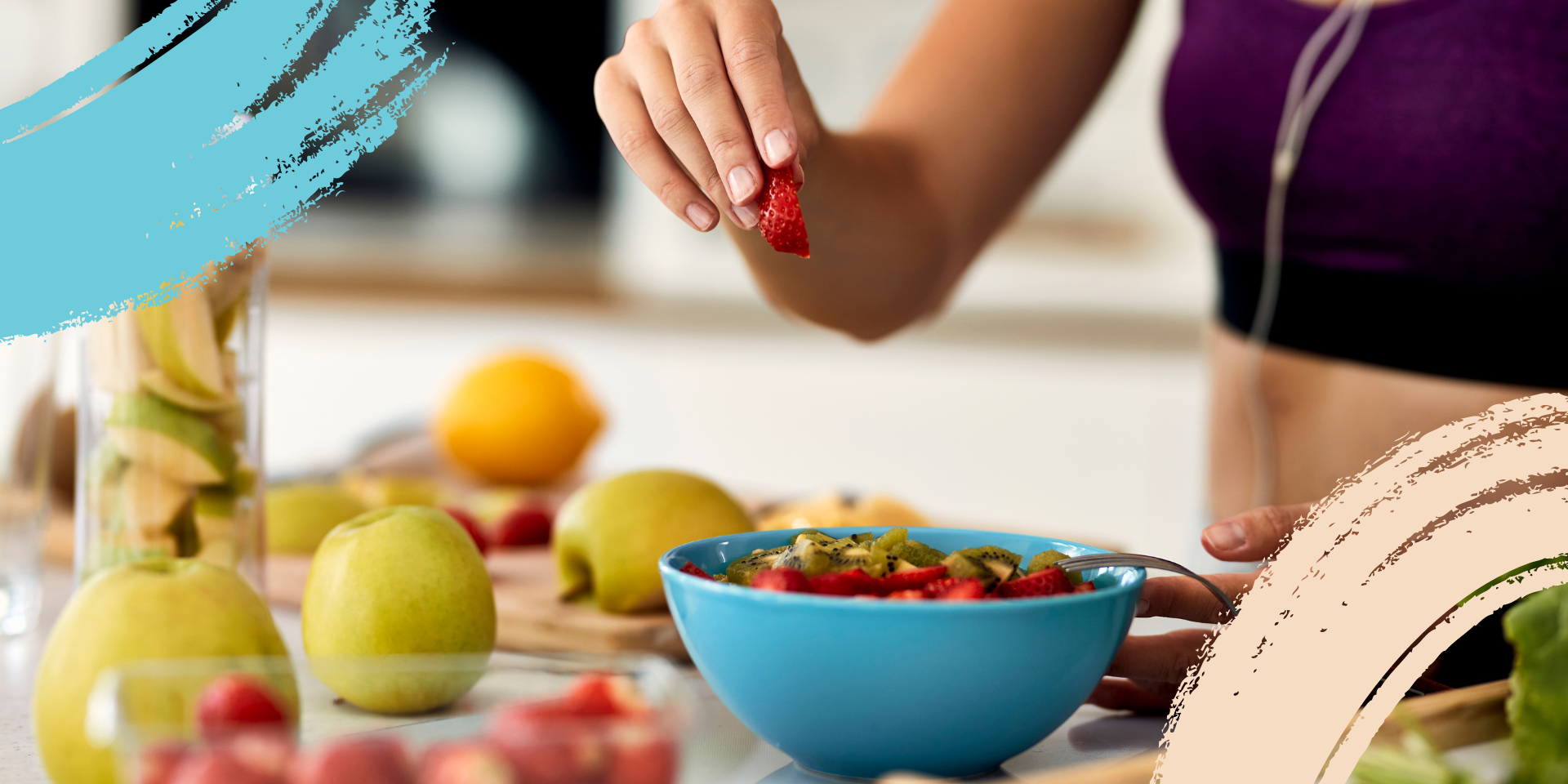Fueling for Tournaments
With the excitement of competition, it is hard to find the right time to eat. Whether it’s the appetite-curbing adrenaline, the inconvenience of stepping away to eat, or the fear of feeling “weighed down,” all too frequently we forgo fueling our bodies, to our own detriment. We've all been there – one minute, you feel great, focused and fast, and as the hours go by your legs feel sluggish and your head hazy – you’ve “hit the wall.” “Bonking” is when your body runs out of readily available energy stores. It is common among athletes but is not inevitable – it’s preventable.
The solution involves more than just adding some snacks while you’re on the sidelines. It’s important to incorporate fueling into your overall training and build healthy long-term habits. In other words, what you do off the court is as important as what you do while you’re on it. That means taking care of your body in the days and weeks preceding a tournament.
Your body needs a combination – as well as a sufficient amount – of fats, carbs and proteins to perform at its best. These needs may fluctuate based on your menstrual cycle or other factors, but here are some general macronutrient recommendations for active women.
Nutritional Needs Throughout the Menstrual Cycle

Sex differences and considerations for female specific nutritional strategies: a narrative review, International Journal of Sports Medicine, April 2022
Carbohydrates:
The most readily available fuel for your body is glucose. Your body converts carbohydrates into glucose, a sugar that circulates in your bloodstream. Your body also stores excess glucose in your muscles and liver as glycogen for later use, although it can only store enough for about 100 minutes of activity. Carbs should account for approximately 45-65% of your daily caloric intake. Women should target consuming 6-10g of carbs per kg of bodyweight a day. Good sources include fruits and vegetables and whole grains.
During the follicular phase of your menstrual cycle (from the start of your period until ovulation), it is easier for your body to use (or metabolize) carbohydrates (as compared to fats and proteins). On the other hand, glycogen storage is connected to fluctuations in estrogen. Estrogen peaks sharply at the end of the follicular phase (right before ovulation). During this time, the capacity to restore muscle glycogen is at its highest, also known as “glycogen supercompensation.” Estrogen rises again during the luteal phase (after ovulation and before your period), and during this time, glycogen storage is also enhanced. During these times of elevated estrogen, you may notice you crave carbs. While carb loading can be effective during any phase of your menstrual cycle, it is slightly more effective during the late follicular and mid luteal phases.
Proteins:
Proteins are essential for building and maintaining your muscle mass. As an active athlete you need at least 1.6g of protein per kg of body weight a day. It’s best to break up your total daily protein intake into 20-30g servings. You may’ve heard the term “complete protein” before. A complete protein contains the nine essential amino acids that are the building blocks for new protein in the body. Essential amino acids can only be consumed through food, while regular amino acids are produced by your body. Foods containing complete proteins include whole soy like tofu and tempeh, eggs and dairy, meat and fish, and quinoa. Other protein sources are beans and lentils, whole grains, and nuts and seeds.
Protein metabolism is optimized during the luteal phase, particularly the mid-luteal phase (the middle third of the luteal phase) of your menstrual cycle, when both estrogen and progesterone levels rise. Your body will use more protein at rest and during exercise. Also, the increased progesterone increases protein biosynthesis. Therefore, increasing protein intake during this time (and pairing it with resistance training), can potentially increase skeletal muscle mass.
Fats:
Fats get a bad rap, but you need adequate fat intake to keep your hormones in balance. Additionally, women burn fats during sustained periods of aerobic exercise. In fact, your body contains enough fat to run nonstop for about five days! Fats should account for approximately 20% of your daily caloric intake, with 15% of total calories coming from unsaturated fats. Unsaturated fats include avocados, olives and olive oil, nuts and seeds, and fatty fish. Many of these unsaturated fat sources also contain Omega-3s, an essential fat that you must consume because your body can’t make it on its own. Saturated fats, like those found in red meats, butter, and cheese, are also part of a balanced diet. However, these fat sources are harder for your body to break down and should be eaten in moderation.
Women experience a greater metabolism of fats during the luteal phase. This increased oxidation of fats in turn spares muscle glycogen, which is why you might experience greater endurance during your luteal phase.
Tournament Tips:
Maintaining adequate energy stores over the long term will help your body stay healthy, which can only help your performance in tournaments. However, any time you experience sustained activity – such as at a tournament – you need to plan and adjust appropriately. Below are some ideas to keep in mind as you prepare.
Before:
- In the three days leading up to the competition, you can “top-off” your glycogen stores by eating 8-10 grams of carbohydrates per kilogram of bodyweight per day.
- You should consume at least 1g/kg of carbs in the 2-3 hours before exercise.
- Try out different snacks during training to know how they will affect you during competition and create a Tournament Day fueling plan in advance.
During:
- Pay attention to your breath. High-intensity exercise exhausts more glycogen and blood glucose, as muscles increase the frequency of their contractions. Conversely, low-intensity exercise burns more fat. If your breathing is labored, or it’s difficult to maintain a conversation, that’s an indicator that you’ll burn through your glycogen stores more quickly and need to refill sooner.
- Fuel early and regularly: Do not wait for your body to tell you it’s time to eat. Unlike our grumbling stomachs, our muscles do not have an easy way of signaling they need fuel (until it is too late.) By fueling regularly, you are keeping energy readily available for your body.
After:
- Eat within 30 minutes to an hour after exercise: The earlier you eat, the better. This will help rebuild your glycogen stores as quickly as possible. Women should consume at least 0.75g/kg of carbs following prolonged exercise.
- Other foods to think about are those that are easy to digest and high in available energy. A great example are foods that are high in carbohydrates and low in fiber, such as cereals, bagels, bananas, yogurt, chocolate milk, fruits, and starchy vegetables.
Whether you train exclusively on the weekends or throughout the work week, you can benefit from a deeper understanding of how to fuel properly. Giving your body enough fuel will not only help your training and performance but may also help you feel better off the court.

References
Wohlgemuth et al. (2021). Sex differences and considerations for female specific nutritional strategies: a narrative review. Journal of the International Society of Sports Nutrition








